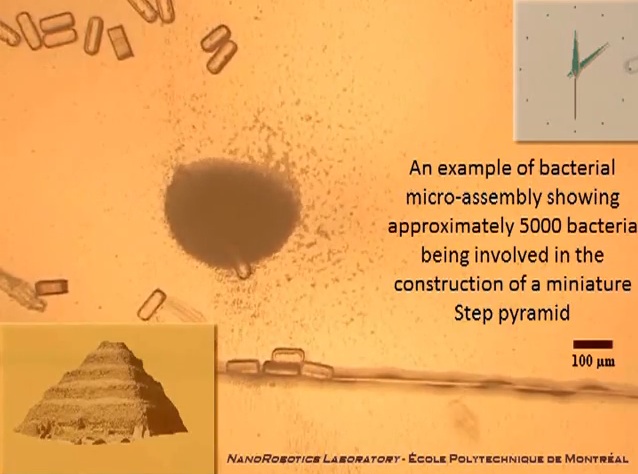
We didn’t see this one coming: corralling a herd of Magnetotactic bacteria to build a 3D pyramid.
The process works due to the amazing magnetic properties of these tiny agents. They respond to magnetic fields by moving in the field’s direction by flapping their two flagella bundles generating up to a whole 4 piconewtons of force. Evidently these tiny creatures contain an internal compass.
How does it actually work? You’ll see when you watch the video, but essentially the bacteria are formed into a massive blob that is directly controlled by magnetic fields under computer control. The blob then is directed to push an extremely tiny block towards the assembly point. If this is repeated many times, it’s pretty much the same as brick laying. But a lot smaller in scale.
This is no where near product state, and we’d wonder how fast it could really be done – the pyramid example apparently took some 15 minutes to complete, and there weren’t very many parts to it. The one powerful aspect to this approach is numbers. Bacteria are frighteningly small, and you can easily obtain truly terrifying numbers of them. Large numbers of bacteria clusters could theoretically work in parallel on a project. You might think 4 piconewtons is not very much force, but when it’s done by a trillion bacteria, well, do the arithmetic.

